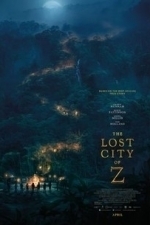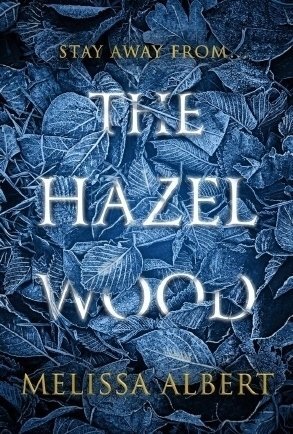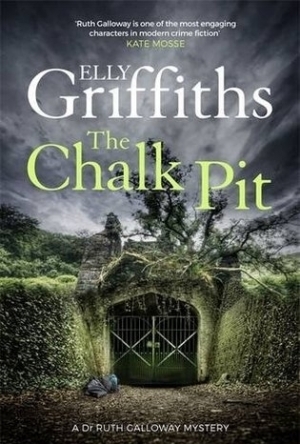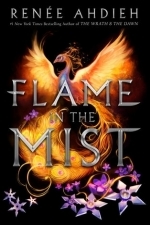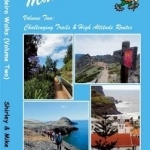
Madeira Walks: Volume 2: Challenging Trails & High Altitude Routes
David Brawn, Shirley Whitehead, Mike Whitehead and Ros Brawn
Book
As a walker's paradise, Madeira has it all - majestic mountains, rugged coastline, ancient forests,...

Naples & the Amalfi Coast Marco Polo Guide
Book
Marco Polo Naples & the Amalfi Coast: the Travel Guide with Insider Tips Experience all of Naples &...

Expanded Lovemaking: Sex, Love, and Consciousness
Podcast
Enjoy juicy and informative interviews with the acclaimed author Dr. Patti Taylor of...
Gareth von Kallenbach (980 KP) rated The Lost City of Z (2017) in Movies
Jul 11, 2019
We are introduced to Fawcett as he is an Army Major who seeks to have some sense of distinction and recognition. Seeking notoriety and a sense of honor, Fawcett accepts the task of mapping out disputed territory between Peru and Brazil at the opening of the 20th century in order to prevent war between the two nations.
In his exploits, he is confronted with the exploitation of the indigenous population, extraction of resources, and an untamed land. Upon subsequent journeys and serving in World War I, he is consumed with the need to find a sense of honor in his duty to his nation. Over the course of the film, we begin to see how invested he is in this struggle to learn more about the people and places that he is exploring, however, there isn’t a true connection made between Hunnam’s portrayal and the audience. At times, I found myself not caring about Fawcett’s contributions or career. I could not get invested in his story or his struggle to find a lost city that he believed existed in the wild. By the end of the film, I wasn’t invested in who Fawcett was, what he set out to accomplish, or even his legacy.
One thing that I did find remarkable was that the film helps to expose much of the anxiety and danger that existed during this period and previous expeditions into the region. Additionally, it gave me an appreciation for the endless heights of the human ego, ambition, and drive. The film allows for a critique to emerge about western interference and exploration of the region and the ethnocentrism held by western nations. Lost City of Z is an expansive visual spectacle. The jungle becomes a living, breathing, creature that audiences will connect with, become fearful of, and appreciate. It is the character that carries the film.
The actors and actresses are the background. This aspect allows for the audience to become absorbed by the surroundings and the environment that the characters find themselves in.
The film is beautifully shot and captivating. The sequences are engaging and give the sense of being transported to a foreign, mysterious land that holds secrets that many of us could never comprehend or witness with our own eyes.

Pluviometer - Rain gauge
Weather and Utilities
App
The pluviometer is an instrument used to measure the amount of rain fall in a day. It is part of...
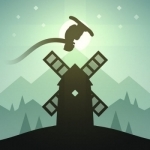
Alto's Adventure
Games
App
Above the placid ivory snow lies a sleepy mountain village, brimming with the promise of adventure. ...
Hazel (1853 KP) rated The Hazel Wood in Books
Nov 12, 2017
“Imagine Marvel did fairy tales …” Well, I cannot because I have never seen a Marvel film but I understand the sentiment. The Hazel Wood by Melissa Albert is a book where fairy tales and reality collide. However, these are not stories full of glamour and grandeur, they are the sort originally told by the Jacob and Wilhelm Grimm during the 19th Century. What begins as a fairly realistic tale rapidly spirals into chaos when characters from a book start appearing in New York, something that should be impossible.
For seventeen years, Alice and her mother, Ella, have been travelling on the roads, barely stopping in places for more than a few months. It would be nice to have a home and settle down, however, they are always chased by bad luck, causing them to flee at any moment. Alice is not sure of the cause of their misfortune but suspects it may have something to do with her reclusive grandmother who lives alone on her estate titled the Hazel Wood. Alice’s grandmother wrote Tales From the Hinterland, a book of pitch-dark fairy tales, many years ago and it has become a rare piece of literature – a collector’s item; not even Alice has read it. But when her mother goes missing under suspicious circumstances, Alice wishes she had.
Homeless without her mother, Alice seeks help from a school acquaintance, Ellery Finch, whom she knows is a fan of her grandmother’s work. Yet, before they can formulate a plan to locate her mother, the cause of her bad luck reveals itself in the form of impossible, murderous fairy-tale characters. As Alice learns more about the Hinterland, she discovers that she has been receiving glimpses of the characters all her life.
Alice is in danger, as is Ellery, but she will stop at nothing to retrieve her mother, even venturing into the Hazel Wood – a place she has been forbidden to enter. With Ellery using his father’s wealth and connections, the two make a long journey to the place they believe her mother is being held, but what Alice finds there is more dangerous and shocking than she could ever imagine.
Retellings of fairy tales have become a popular genre in recent years, particularly amongst young adult literature. The Hazel Wood, however, is only loosely based upon ideas featuring in ancient folktales; the stories themselves have been thought up by Melissa Albert with unique characters such as Twice-Killed-Catherine and Three-Times-Alice. Although it is often fun to analyse the comparisons and differences between old tales and new, it is refreshing to come across brand new fairy tales.
Initially, the book comes across as a thriller and mystery set in the real world, however, fantasy elements quickly creep in. Two-thirds of the way into the story, the setting and genre change direction, introducing a fictional world where rules of nature have gone out of the window. At this point, it becomes slightly confusing to fully visualize the situation, and the storyline begins to get darker and darker.
Children’s fairy tales always have a happy-ever-after, however, the traditional ones rarely did, therefore, it is impossible to guess how The Hazel Wood will end. This, along with humour and enchanting action, hooks the reader and, according to other reviewers, has resulted in many hours slipping away without notice.
The Hazel Wood is a unique story on the cusp of young adult and adult fiction. It is not only a good work of fiction; it is clever and well thought out, too. Melissa Albert is certainly an author to look out for, especially if you like dark mysteries and thrillers.
Kristy H (1252 KP) rated The Chalk Pit (Ruth Galloway, #9) in Books
Feb 13, 2018
It's hard to believe this is the ninth book in Elly Griffiths' fantastic Ruth Galloway series. I'm sure all my reviews are starting to sound somewhat similar by now, but these books are just so wonderful, and I love them so. Ruth is a great character: she's well-written and completely herself, and the cast of characters that surround her in each book (Nelson, his wife, Judy, Cathbad, Clough, Tanya, etc.) are also their own people. Each are so fully developed that you feel as if you know them as intimately as friends. I love Ruth and her antisocial nature, her sarcasm, and her fierce devotion to her daughter, Kate (who can be so different from her mother). I love gruff Nelson. I love all of Nelson's subordinates on the force. They seriously do feel like friends, and while I loved this book, I felt bereft when it ended, because it means I have to wait again for another one (I will be so sad when this series ends).
I have no complaints with book #9. I enjoyed the plot and while it wasn't a total page-turner, it kept me guessing, and I didn't figure out everything ahead of time, which I always appreciate. There are some interesting developments in the whole Ruth/Nelson/Michelle saga and while I wish I could just flash forward to find out everything that happens, I was intrigued by all of them. This little love triangle is a great backstory to the novels, and the tension between Ruth and Nelson is so achingly portrayed in the books: Griffiths is doing a wonderful job of depicting it as Kate ages and new complications emerge with the dynamic.
In the end, as I always say: if you aren't reading this series: you should. It's wonderful, engaging, and I truly think you will fall for Ruth and her world. You don't necessarily need to read these books in order (novel #9 and its plot will stand on its own), but I think starting at the beginning will certainly enrich the experience. Meanwhile, I will be patiently waiting for #10 and secretly dreaming of a world where Ruth and I are the sort of friends where we can eat food together without judgement and occasionally get together without any social pressure.
You can read my reviews of book #8, THE WOMAN IN BLUE, <a href="https://www.goodreads.com/book/show/25897794-the-woman-in-blue">here</a>;; book #7, THE GHOST FIELDS, <a href="https://www.goodreads.com/book/show/22749744-the-ghost-fields">here</a>;; and book #6, THE OUTCAST DEAD, <a href="https://www.goodreads.com/book/show/18222687-the-outcast-dead">here</a>;.
<center><a href="http://justacatandabookatherside.blogspot.com/">Blog</a>; ~ <a href="https://twitter.com/mwcmoto">Twitter</a>; ~ <a href="https://www.facebook.com/justacatandabook/">Facebook</a>; ~ <a href="https://plus.google.com/u/0/+KristyHamiltonbooks">Google+</a>; ~ <a href="https://www.instagram.com/justacatandabook/">Instagram</a>; </center>
Hazel (1853 KP) rated The Hazel Wood in Books
Dec 7, 2018
“Imagine <i>Marvel</i> did fairy tales …” Well, I cannot because I have never seen a <i>Marvel</i> film but I understand the sentiment. <i>The Hazel Wood</i> by Melissa Albert is a book where fairy tales and reality collide. However, these are not stories full of glamour and grandeur, they are the sort originally told by the Jacob and Wilhelm Grimm during the 19th Century. What begins as a fairly realistic tale rapidly spirals into chaos when characters from a book start appearing in New York, something that should be impossible.
For seventeen years, Alice and her mother, Ella, have been travelling on the roads, barely stopping in places for more than a few months. It would be nice to have a home and settle down, however, they are always chased by bad luck, causing them to flee at any moment. Alice is not sure of the cause of their misfortune but suspects it may have something to do with her reclusive grandmother who lives alone on her estate titled the Hazel Wood. Alice’s grandmother wrote <i>Tales From the Hinterland</i>, a book of pitch-dark fairy tales, many years ago and it has become a rare piece of literature – a collector’s item; not even Alice has read it. But when her mother goes missing under suspicious circumstances, Alice wishes she had.
Homeless without her mother, Alice seeks help from a school acquaintance, Ellery Finch, whom she knows is a fan of her grandmother’s work. Yet, before they can formulate a plan to locate her mother, the cause of her bad luck reveals itself in the form of impossible, murderous fairy-tale characters. As Alice learns more about the <i>Hinterland</i>, she discovers that she has been receiving glimpses of the characters all her life.
Alice is in danger, as is Ellery, but she will stop at nothing to retrieve her mother, even venturing into the Hazel Wood – a place she has been forbidden to enter. With Ellery using his father’s wealth and connections, the two make a long journey to the place they believe her mother is being held, but what Alice finds there is more dangerous and shocking than she could ever imagine.
Retellings of fairy tales have become a popular genre in recent years, particularly amongst young adult literature. <i>The Hazel Wood</i>, however, is only loosely based upon ideas featuring in ancient folktales; the stories themselves have been thought up by Melissa Albert with unique characters such as Twice-Killed-Catherine and Three-Times-Alice. Although it is often fun to analyse the comparisons and differences between old tales and new, it is refreshing to come across brand new fairy tales.
Initially, the book comes across as a thriller and mystery set in the real world, however, fantasy elements quickly creep in. Two-thirds of the way into the story, the setting and genre change direction, introducing a fictional world where rules of nature have gone out of the window. At this point, it becomes slightly confusing to fully visualize the situation, and the storyline begins to get darker and darker.
Children’s fairy tales always have a happy-ever-after, however, the traditional ones rarely did, therefore, it is impossible to guess how The Hazel Wood will end. This, along with humour and enchanting action, hooks the reader and, according to other reviewers, has resulted in many hours slipping away without notice.
<i>The Hazel Wood</i> is a unique story on the cusp of young adult and adult fiction. It is not only a good work of fiction; it is clever and well thought out, too. Melissa Albert is certainly an author to look out for, especially if you like dark mysteries and thrillers.
Hazel (1853 KP) rated Flame in the Mist in Books
Dec 17, 2018
Famed for her highly rated <i>The Wrath & The Dawn</i>, Renée Ahdieh has created a new fantasy world full of original characters. Set in a land similar to the Middle Eastern countries we are familiar with, <i>Flame in the Mist</i> incorporates out-dated ideology, ancient lifestyle with a hint of supernatural, and, of course – it is a Young Adult novel after all – a dash of romance. With an eclectic mix of themes, it is a book without cessation of adventure.
The protagonist, Hattori Mariko, at the mere age of 17, is destined to marry the son of the Emperor’s favourite concubine, Prince Raidan. The book commences with the journey from her home, however, Mariko never makes it to the city. Ambushed and presumed dead, Mariko is alone in the dangerous forest, at risk of being discovered by the infamous Black Clan. Instead of waiting for rescue, Mariko, fed up of women being treated as inferior to men, decides she does not want to go home, nor does she want to marry the prince. Her only remaining option is to locate the Black Clan and discover who attempted to murder her. But for this to work, she needs to convince everyone she is a boy.
Whilst Mariko is worming her way into the clan, her twin brother is determined to track down and rescue his sister. Unbeknownst to him, Mariko is beginning to feel more affiliated with their enemies than with her own family. And so a dilemma arises. Does Mariko betray her new “friends” or be unfaithful to the brother she loves?
<i>Flame in the Mist</i> is not only about Mariko’s predicament; it also concerns an age-old feud between powerful families, involving the wrongful death of a disgraced Samurai. As the younger generation reach maturity, they determine to avenge the deaths of their fathers, and, without knowing, Mariko ends up in the centre of two warring parties.
It is a little difficult to get into the story initially; many characters are introduced, but their significance is not obvious for some time. To add to the confusion, vital persons are only formally presented at the end of the novel, which finishes on a cliffhanger. The similarity of the foreign sounding names also creates uncertainty.
Ahdieh cleverly includes a problematic situation that our own world has (almost) overcome. Mariko represents the female population, a gender that is believed to be inferior to their male counterparts. Controlled by fathers, husbands, and powerful leaders, women do not have the opportunity to make their own decisions about their lives. Although it is disconcerting that someone wishes to take Mariko’s life, the ambush provides her with the freedom and chance to prove women are as capable as men. Sadly, she has to pretend to be a boy in order to do this.
It was inevitable that there would be a love interest in <i>Flame in the Mist</i>, however, it is not as inspiring as readers may hope for. The attraction between Mariko and a member of the Black Clan almost comes out of nowhere. Not only was Mariko believed to be male for a wide stretch of the novel, the character in question was one of the more abusive.
<i>Flame in the Mist</i> being the first novel I have read by Renée Ahdieh, I have nothing with which to compare it or state why it is readers particularly admire her writing. The story was mediocre at best, with very little characters that garner respect. Having been published less than a month ago, there is already a lot of hype surrounding this book – either I am missing something vital, or readers are going to be disappointed.
